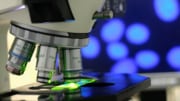PINEHURST – Wound Care and Hyperbarics at FirstHealth of the Carolinas, a member of the Healogics network, is participating in Healogics’ National Diabetes Campaign from October 29 to November 2.
FirstHealth’s Wound Care Centers in Pinehurst, Raeford and Rockingham offer advanced therapies to patients suffering from chronic wounds like diabetic foot ulcers. Team members across the nation will dedicate the entire week to visiting local physician offices to provide education on the treatment of
potential or existing chronic wounds for people living with diabetes.
An estimated 30.3 million people in the United States have diabetes, including more than 1 million
people in North Carolina.
The percentage of adults with diabetes increases with age, reaching a high of 25.2 percent among those aged 65 years or older.
In addition to age, risk factors for diabetes include diet, activity level, obesity and heredity. High blood sugar levels, poor circulation, immune systems issues, nerve damage and infection may contribute to a diabetic foot ulcer.
With America’s diabetic population expected to nearly double by 2030, it is important that people
understand the risks and know the facts associated with diabetic foot ulcers.
Approximately 25 percent of people living with diabetes will develop a foot ulcer.
As many as 40 percent of people with a healed diabetic foot ulcer will develop a new ulcer
within a year.
An estimated 14 to 24 percent of people with foot ulcers will experience an amputation. An
amputation results in decreased quality of life, increased medical costs and a significantly higher
risk of mortality.
The five-year mortality rate following a lower extremity amputation is 50 percent.
Early detection and intervention can help to mitigate the possibility of limb loss. FirstHealth Wound Care and Hyperbarics recommends the following to help prevent diabetic foot ulcers:
Stop smoking immediately
Comprehensive foot examinations each time you visit your health care provider (at least four
times a year)
Daily self-inspections of the feet, or have a family member perform the inspection
Regular care of the feet including cleaning toenails and taking care of corns and calluses
Choose supportive, proper footwear (shoes and socks)
Take steps to improve circulation such as eating healthier and exercising on a regular basis
Proper wound care is imperative to healing diabetic foot ulcers. FirstHealth Wound Care and Hyperbarics offers a number of leading-edge treatments including Total Contact Casting (TCC), Negative Pressure Wound Therapy and Hyperbaric Oxygen Therapy. These specialized wound care therapies can aid in wound closure, new tissue growth, wound tissue regeneration and much more.
Contact a FirstHealth location nearest to you to learn more about diabetic foot ulcers or if you have a wound that will not heal. For more information, and locations, visit www.firsthealth.org/wound.










